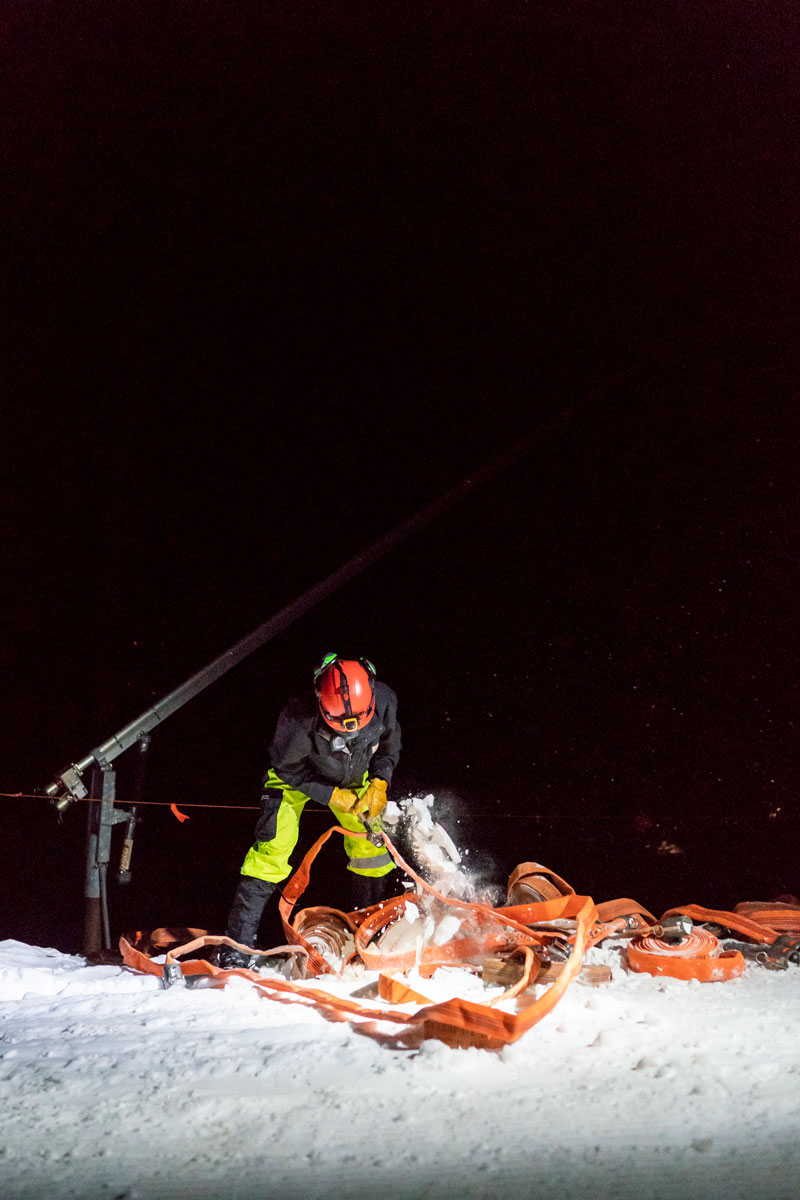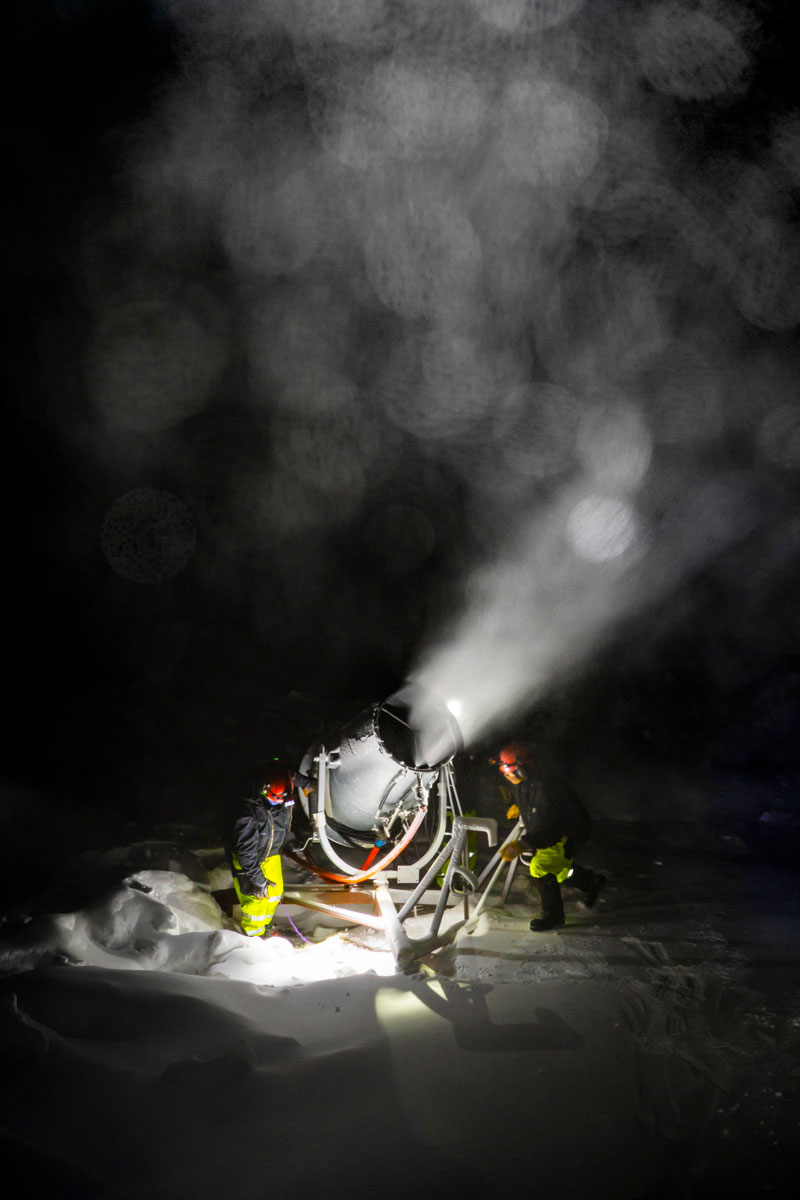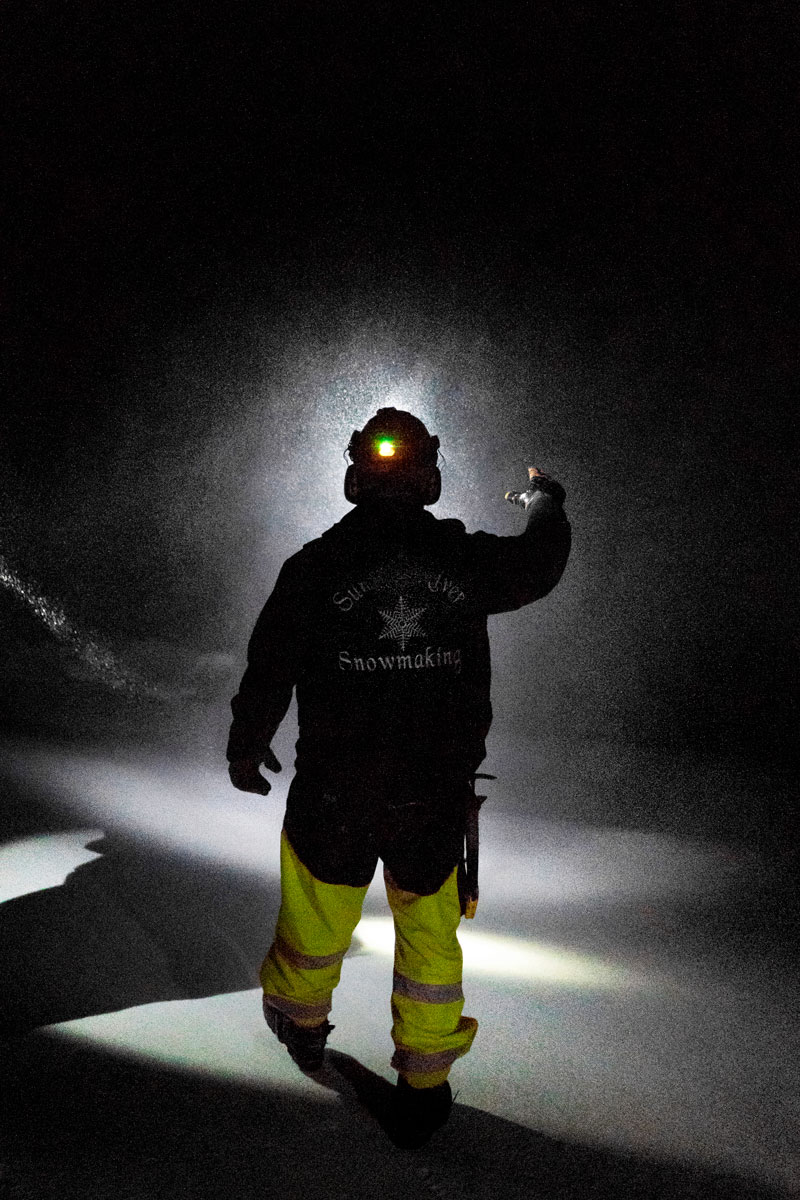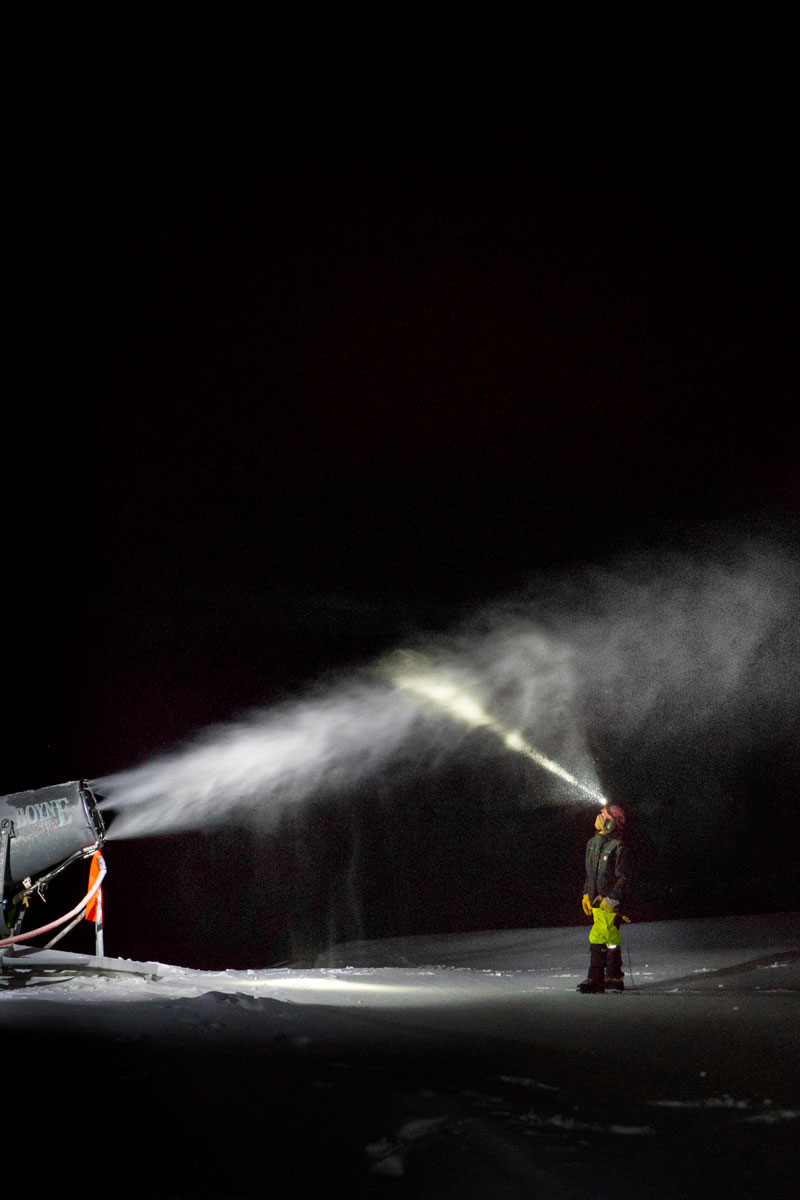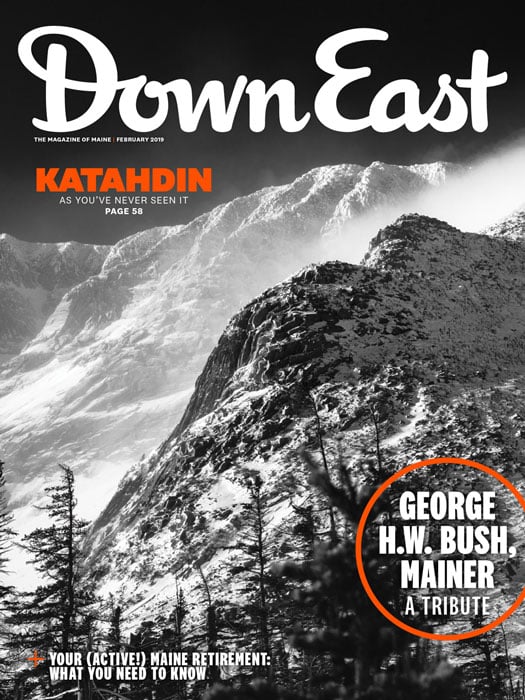By Jaed Coffin
Photographed by Gabe Souza
From our February 2019 issue
On a frigid evening, a team of Sunday River snowmakers shuffles into the break room in a small pump house at the base of the mountain. They’re 10 hours into a 12-hour shift that started at 7 a.m. Their beards are frosted, cheeks red, eyes wide open. In neon pants, buried under helmets, headlamps, and earmuffs, they look like coal miners.
As the crew refuels for another patrol — coffee, pasta, lots of cheese — 37-year-old Will Bastian, director of snowmaking operations, studies a topographical map displaying the resort’s 900 acres of skiable terrain. Woven among a network of 135 trails is a complex web of black veins: the 80 miles of pipes that use between 300 and 600 PSI of compressed air to pump up to 9,000 gallons of water per minute, feeding 1,900 snow guns. A few years back, Sunday River won an industry award for its adeptness at making its own weather, and, facing ever less wintry winters, the resort keeps investing to improve the system. “It’s like a giant jigsaw puzzle,” Bastian says. “But every year, the puzzle’s different, and the pieces change shape.”

This year, after spending the off-season working on farms and apple orchards and at various other odd jobs, the snowmakers, reported for their first shift on October 16. Three days later, the mountain opened. For many of them, fall is a time of anticipation. “All you want is for it to get cold again,” five-year-veteran Zack Louison, age 29, says. “By late August, I started getting amped, compulsively checking the forecast, waiting for it.” By it, he means the sustained sub-freezing temperatures needed to start turning water from the eponymous Sunday River into snow. On days when the weather doesn’t cooperate, Louison and company spend their time on the mountain “fixing everything we broke the day before.” “Those are sad days,” he half-jokes. “We all go home and cry ourselves to sleep.”
Tonight, Bastian’s crew is working a well-used trail called Dream Maker. They head back outside, and Bastian shuttles them to the top by snowmobile. In teams of two, they set to work: hacking at frozen mounds with the claws of their hammers, freeing up buried hoses, untangling electrical cords, monitoring valve pressures, beating chunks of ice off the running guns. There are hazards in this line of work. Hoses can burst, and valves can blow off. Even just traveling down the mountain — wading through waist-deep snowdrifts — can be dangerous.
“It gets pretty real out here,” says Ashley Leedberg, who spends summers as a sea-kayak guide and winters commuting here daily from Portland, three hours round-trip. A 28-year-old rookie, she’s one of three women on the 36-person on-hill snowmaking staff this year. “You get the true version of who a person is,” she adds. “The wind blowing, the cold, you just can’t pretend to be someone you’re not.”
Click or swipe for a slideshow of the Sunday River snowmaking team at work.
One might think that so much time on the slopes would lead to mountain fatigue. “I still manage to ski 50 to 75 days a year,” 39-year-old Chris Jamison says — and most all of his coworkers are skiers and riders too. “I mean, you gotta know what you’re making.”
By 7 p.m., the clouds have parted, stars are out, and the crew is on its final lap down the mountain. Chairlifts had stopped running several hours ago. Soon, a fresh team will take over for the night shift, and the guns will keep running.
“I take it personally when people call it ‘artificial’ snow,” Bastian says. “This,” he picks up a handful of his powdery crop, lets the wind blow it away like dust, “it’s just water, air, and weather. Nothing artificial about it. We’re snow farming.”





